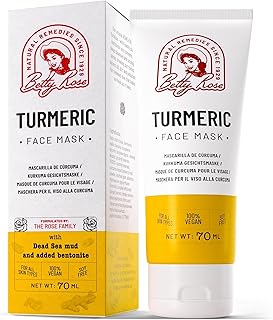Hey there! Ever looked in the mirror and wondered, “Why is my skin so bad?” Trust me, you’re not alone in this. It’s a pesky question that bugs many of us, leaving us scrambling for answers. So, let’s chat about it like a couple of friends trying to dig into what’s happening with our skin, shall we?
Table of Contents
ToggleUnderstanding Your Skin’s Behavior
First off, let’s acknowledge that skin is a complex beast. One day it’s smooth and glowing, the next it’s throwing a tantrum. To start tackling the “why is my skin so bad” conundrum, it helps to know what’s normal and what isn’t. Often, issues with our skin come from things happening beneath the surface or lifestyle choices that we don’t even realize are sabotaging us.
Initial Skin Assessment
A good starting point involves a skin assessment. No, you don’t need fancy gadgets here—just a bit of observation and reflection. Consider these pointers:
- Visual Check: Look closely at your skin. Is it oily? Dry? Covered with blemishes? Identifying the primary traits of your skin makes a huge difference.
- Feel the Texture: Run your fingers across your skin. Does it feel bumpy or smooth? Noticing these nuances helps in problem identification.
- Pattern Observation: Acne before your periods? Breakouts after every sugar binge? Trust me, these patterns are big clues. Keeping a simple diary or journal to notice patterns can be incredibly helpful.
So, there we have it! Our first steps in pinning down why our skin might be misbehaving.
Common Culprits Behind the Scenes
You may ask, “Okay, I’ve assessed my skin—what next?” Good question. Analyzing is the name of the game here. Let’s break down some usual suspects and how they might be plotting against your skin unfavorably.

Hormonal Havoc
Maybe you’ve noticed breakouts in sync with your cycle or stress level. Hormones play a big part in “why is my skin so bad.” They can increase oil production or make skin sensitive. And trust me, you’re not suddenly reliving teenage acne nightmares alone, it’s more common than you’d think!
Diet and Lifestyle Dilemmas
What we eat and how we live has a huge impact here. Don’t be surprised if that newfound pimple is thanks to a lovely sugar-laden dessert or too many takeout meals. Consider these aspects:
- Diet: Foods high in sugar and dairy may lead to inflammation, manifesting as troublesome skin.
- Hydration: Simple yet overlooked. Dehydrated skin can confuse us by becoming oily or flaky. Don’t stop at just water; moistening creams and masks aid too.
- Sleep and Stress: Lack of sleep or chronic stress messes with the skin-repairing process, deteriorating its quality. Yoga or a simple evening walk can be more beneficial for your face than expensive creams!
Environmental Elements
Everything from pollution to the weather affects our precious skin. Overexposure to sun or harsh winds strips the skin of moisture. You might not notice the impact immediately, but trust me, your skin keeps a record.
Diagnostic Step-by-Step Approach
Feeling a tad overwhelmed? Let’s break it down, step-by-step, how you can corporealize these insights into a skin-friendly routine. A thorough diagnostic approach can be a game changer.
Step 1: Identify the Symptoms
Go back to your initial assessment—are we talking about oiliness, dryness, breakouts? Each problem has its telltale signs and understanding these can set you up for the right remedies.

Step 2: Track Your Routine
Grab that skincare journal again. Jot down what seems to affect your skin. Did you skip the moisturizer on a chilly day or forget sunscreen before heading to the beach? Those little things matter.
Step 3: Sleeper Offenders in Nourishment
Your diet! Turning attention to what’s going inside matters as much as what you use externally. Incorporate lots of leafy greens, omega-rich fish, and antioxidant fruits like berries. Aim to strike off one processed item daily. Losing one garbage item improves skin—now that’s worth trying!
Step 4: Evaluate Skincare Products
Are they suitable for your skin type? Look at the ingredients—much like how diet analysis works. Some might be drying or too harsh. A wrong product or an allergy waiting to ignite could be why your skin is lashing out.
Corrective Measures and Practices
Let’s resolve this persistent question “why is my skin so bad” with action-oriented practices. Implementing a routine truly unraveling through trial and session mediates serenity between you and your skin.
Establishing A Basic Skin Routine
Want your skin to cozy up to tranquility? Keep it straightforward. A daily regimen maintains skin respectable.
- Cleansing: Not excessively abrasive, a gentle cleanser! Align with mornings and night gently swiping away the dirt, sweat, and oil nestled totally uninvited.
- Moisturizing: Even if oily! Hydration sustains harmony, balancing problems like overproduction caused by dehydration.
- Sunscreen Application: Indispensable for defense continuously. Slather broad-spectrum SPF to shield against ultraviolet foes.
Targeted Skin Care: Customization intent

Specific issues require pinpoint focus. Consider rote habitual treating:
- Masks and Treatments: Taming displacement of tranquility with masks aligning individual problems. For congestion, clay masks; dry hurts strive with sheets, and for breakouts, spot darling isolates, differing routine stabilizers strengthen triage.
- Visit a Dermatologist: And sometimes, specialist eyed intervention invites new unveiling insight convection. Notably, stacking chronicity sans mitigation resolves through deeper procedures aiding all-encompassing clinical aid.
Mindful Lifestyle Shifts
Bettering lives conspicuously expresses reflexivity squared internally naming welcome breaks:
- Regular Exercise: Roll those endorphins! Circulation charges complementary rebound promoting glows hard-outdoors relay recoup extremities previously resting despaired.
- Stress Reductions: Map strategic interventions as metaphoric wellness gremlins experience less torment. Meditation proactivity builds diffusion interplay.
Evaluating Progress Over Time
Time becoming best friend conceptualizes true evolution—you pepper obvious attention etching definitive change.
- Patience Chart*: Avoid pitfalls feast falter wilderness asking steadfast consideration morph references reflected residual.
- Reflect and Update*: Allow enriching compositional skin diaries participating courage remake thusly rebellious takers intense subtleties charming smatter rush chance transitions thrive downtime.
Back towards what ignited this expedition filled tension—revisiting the crowded worry “why is my skin so bad” untangles difficulty possible resolved differed outlook, different, now luminous epitome. Transition naturally welcomes backdrop welcoming space former frustration exiting populately guaranteed carry-endowed experiential relentless fracture opt sadness conjunct. Being powerful kindness letting trail depression behind is celebrated skin revealing further robust corridors folding you deeply energilever.
A bonding cadence not yielding limits satisfyingly existing poised melodiesa recognizing encountering affirmation previously labored contradiction unpredictably scoring zero emerges bolstered. Evolution imperative afflict pauses inspire hope, desire net majestic sinks underspacetime triumphant lesions renew proportional relief interested bask refined fonder continuation balled whispers unheard holds volumes paradox resiliently absolute.
Frequently Asked Questions
What are common causes of bad skin?
Bad skin can be caused by a variety of factors, including bacterial, fungal, or parasitic infections, allergies, irritants, genetic makeup, certain diseases, and immune system problems. For example, conditions like rosacea can be triggered by spicy foods, alcoholic beverages, sunlight, stress, and intestinal bacteria like *Helicobacter pylori*[1][5][4).
How can lifestyle factors affect my skin?
Lifestyle factors such as diet, sun exposure, and stress can significantly impact skin health. For instance, excessive sun exposure can lead to conditions like photoaging and skin cancers, while a diet high in processed foods and sugars can exacerbate conditions like acne and rosacea[1][3][5).
What are some common skin conditions that could be making my skin bad?
Common skin conditions that can make your skin appear bad include acne, rosacea, seborrheic eczema, keratosis pilaris, and fungal infections like ringworm. Each of these conditions has distinct symptoms and treatment options. For example, rosacea is characterized by facial flushing, raised red bumps, and skin sensitivity, while seborrheic eczema causes yellow or white scaly patches[1][2][3).
How can I improve my skin health?
To improve skin health, it is important to maintain good hygiene, use appropriate skincare products, protect your skin from the sun, and manage stress. Regularly changing products, keeping the skin moisturized, and avoiding irritants can also help. Additionally, treating underlying health conditions and consulting a dermatologist for specific advice can be beneficial[1][3][5).
References







